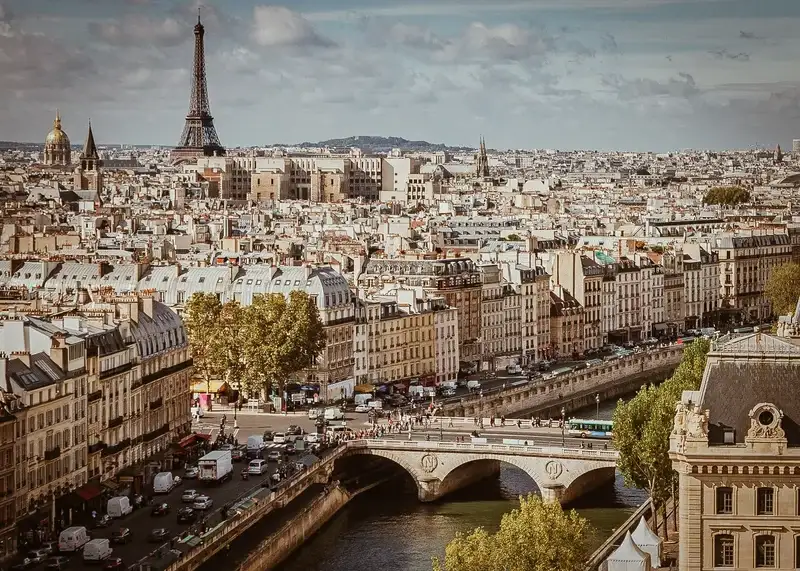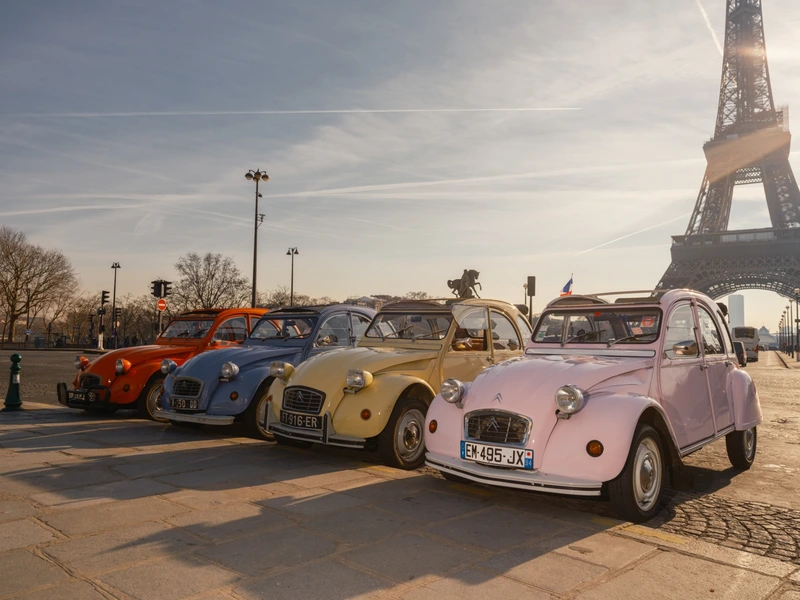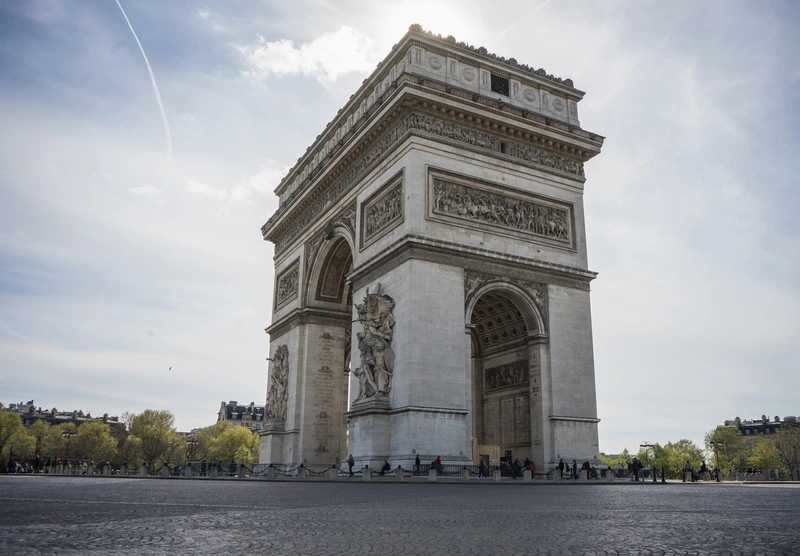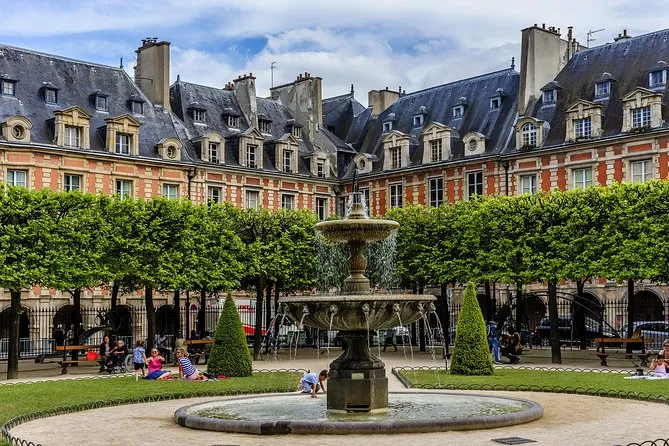The Best of Paris: Guided Tour of the Top 10 Iconic Places and Monuments You Must Not Miss

Paris is like a real amusement park! Even though it can be challenging, due to time constraints, to enjoy everything it offers, these attractions, whether touristy or not, all deserve a visit. Here's a selection of 10 must-see Parisian places that we hope will help you make your choices or even inspire you to visit them all!
1. The Eiffel Tower!
The Eiffel Tower? What more can be said? It's an iconic symbol of France ever since its inauguration during the 1889 World's Fair. The view from it is breathtaking, and the emotion remains intact when you approach the tower that was the world's tallest for nearly 50 years.
If you're still indifferent to the Iron Lady (because clichés aren't for you!), imagine yourself in 1889, at the time of its construction, when the tallest building in Paris was still just the Saint-Louis des Invalides cathedral. 300 m ! Think of the technological feat, its foundations so deep on the banks of the Seine, the thousands of hands that tightened the thousands of bolts, its lifts that have remained identical... The Eiffel Tower - the most visited monument in the world with nearly 14 million visitors a year - is nothing less than the crown of Paris!
Discover a unique experience when you visit Paris: combine your visit to the Eiffel Tower with a guided tour of the city. excursion to the Champagne vineyards and make your stay a memorable one.

2/ The Arc de Triomphe
Built under the orders of Napoleon, starting in 1806, and inaugurated in 1836, the Arc de Triomphe is a symbol of the victories of an entire nation. Even without going up it (access with a ticket), you can visit the roundabout of Place de l'Étoile by taking one of the tunnels. From there, you can appreciate the hustle and bustle of Parisian traffic and the monumental architecture of this trophy celebrating the glory of the French army.
The Tomb of the Unknown Soldier has been located there since November 11, 1920. Every day at 6:30 PM, a ceremony is held to rekindle its flame. On one of the pillars facing the Champs-Élysées, you won't have any trouble recognizing the immense Napoleon towering over Paris. The emperor chose this location, on one of Paris's hills, to amplify his gigantism, even though the Arc de Triomphe itself has dimensions three times larger than traditional triumphal arches of Ancient Rome. Napoleon's arch is 49 meters in height compared to an average of 17 meters for those in Rome.
The roundabout of Place de l'Étoile was designed by Baron Haussmann during Napoleon III's reign. You'll notice that at the intersections of the twelve avenues converging at the roundabout, private mansions were built following the same architectural model.
Therefore, you can experience two centuries of French history at the base of the Arc de Triomphe (or from its summit, as it offers one of the most beautiful views of Paris).
While you're exploring the wonders of Paris, why not round off your stay with a visit to a Private tour of the LouvreAn unforgettable experience that will enrich your tour.

3/ The Louvre and the Tuileries Garden
The Louvre, did you know that before becoming the largest museum in the world, it was a fortress built on the defensive wall of King Philippe Auguste? Built at the turn of the 13th century, this stronghold represented a true revolution in the field of military architecture. To the extent that the Louvre Castle became a model for many castles built throughout Europe during the late Middle Ages. They would even call it the "Philippean Castle"!
Within the museum, it's possible to see the foundations of Philippe Auguste's castle, which was built on the site of the current Cour Carrée, including its round towers, which were a major innovation at the time.
The largest museum in the world welcomes over 10 million visitors each year. It houses a collection of 500,000 works of art, with 36,000 on display in over 70,000 square meters of exhibition space.
The museum was inaugurated in 1793 in the Louvre Palace, the former royal residence. It was initially named the Central Museum of the Arts of the Republic. The first pedestrian bridge in Paris, the "Pont des Arts," located between the Louvre and the Institute of France, is named after the museum.
If you don't feel like being indoors on such beautiful days, the Tuileries Garden will also astound you. Designed for the now-lost Tuileries Palace (built by Catherine de Medici), the Tuileries Garden was redesigned by André Le Nôtre (just like the Champs-Elysées). The garden is named as such because it is located on the site of a former tile factory.
There are nearly a hundred statues in the Tuileries Garden, along with two national museums whose existence can be attributed to Napoleon III. In 1852, he ordered the construction of the Orangerie and the Jeu de Paume at the western end of the garden, near the Place de la Concorde.
4/ Place Vendôme and Place des Vosges
The French capital has five royal squares: Place des Vosges, Place Dauphine, Place Vendôme, Place des Victoires, and Place de la Concorde. We will focus on the history of those that have best withstood the test of time.
But what is a royal square? The simple idea was to build a square with a statue of the king in the center. It is often said that the Plaza Mayor in Madrid, built at the very end of the 16th century, was the first of its kind. Place des Vosges was built only a few years later, in 1604. It was originally called "Place Royale" and was later renamed Place des Vosges because it was the first department to pay the tax to support the revolutionary army (or simply its taxes).
Initially, it was intended to house craftsmen and merchants under arcades. However, given the exorbitant construction costs and the beauty of the complex, it was eventually the great families who settled here. The Hôtel de Sully (you can visit the garden!), King Henri IV's first adviser, Victor Hugo's house (which is free to visit!), the great restaurants (including the three-star Ambroisie, which has welcomed the Clintons and Obamas), and more, all bear witness to this.
The façades are protected (you are not allowed to touch them!). The buildings are made of brick, stone and slate. As brick is an expensive material, you'll notice that some buildings have been given the illusion of brick, with the brick painted directly onto the stone. This makes for a particularly well-preserved architectural ensemble, just like the sumptuous private mansions just a stone's throw away in the Marais district.
Place Vendôme, also perfectly preserved, was inaugurated in 1686. Formerly known as Place Louis-Le-Grand, it has housed the Vendôme Column at its center since 1810. This column, inspired by Rome's Trajan's Column, features bas-reliefs depicting the great Napoleonic battles. At its top is the sculpture of Napoleon I as a Roman emperor, created by Auguste Dumont (the sculptor of the "Génie" on the July Column in Bastille Square).
The rigorous architectural programme guarantees the unity of the town houses and therefore of the square: railings, mouldings, sculptures, window shapes... The only elements that differ from one building to another are the sculpted portraits that can be admired above the doors. In all, 158 portraits - all unique - sculpted by the same artist.
5/ The Latin Quarter: a journey through the historic and cultural heart of Paris
The Latin Quarter: a journey through the historic and cultural heart of Paris
Nestling on the left bank of the Seine, the Quartier Latin is one of Paris's most vibrant and authentic treasures. This legendary district, where the echoes of philosophers, writers and students from all eras still resonate, invites you to immerse yourself in a world where history, culture and the gentle way of life intertwine at every street corner.
Naturally, while you're exploring the Marais, take the opportunity to discover the historic charms of Paris through the captivating tours of the Latin QuarterA place steeped in history.
Stroll along its cobbled streets lined with small independent bookshops, lively cafés and colourful facades that tell the story of a thousand years of history. Here, you can stroll along rue Mouffetard, one of the oldest streets in Paris, enjoy a crêpe while listening to a violinist play on the steps of the Sorbonne, and escape to the Luxembourg gardens, in the shade of statues and lime trees.
The cradle of French intellectual thought, the Latin Quarter is packed with iconic landmarks: the Panthéon, where Voltaire, Rousseau and Marie Curie are laid to rest, the legendary Sorbonne University, and the majestic church of Saint-Étienne-du-Mont. And don't forget the bouquinistes on the quays of the Seine, those little green boxes full of literary treasures.
With its mix of culture, gastronomy, romanticism and bohemian atmosphere, the Latin Quarter is a constant invitation to discover and marvel. It's a warm, lively, human Paris - the kind you dream of meeting.

As well as exploring the Eiffel Tower or the Louvre, why not extend your Parisian experience by discovering one of the most famous museums in the world? Guided tour of the historic Marais district in Parisfamous for its magnificent town houses and enchanting gardens?
It would be a shame to leave Paris without having explored the wonders of the surrounding area, so don't hesitate to enhance your stay with a trip to an unforgettable guided tour of the Château de Versailles to discover the splendour of its architecture and magnificent gardens.
For a unique cultural experience to complement your visit to Paris, don't miss the chance to take part in a Guided tour of the Fondation Louis VuittonA real immersion in contemporary art.
During your stay in the City of Light, immerse yourself in the bohemian atmosphere of this emblematic district by following this guide. Montmartre walking trailfor a unique and authentic experience.
While you're in Paris, look beyond the Eiffel Tower and explore the city's other architectural gems, including a guided tour of the Paris Pantheonto enrich your cultural experience.
During your stay in Paris, don't miss the opportunity to explore the city's wonders in depth through the Parisi Tower offering you a unique and rewarding experience.
Explore the wonders of Paris with fresh eyes by opting for a a one-day tour of the capital and continue your discovery with a visit to the Eiffel Tower, which will surpass your expectations with its majestic grandeur.
To find out about this year's not-to-be-missed arts events in the capital, visit our events page. surreal exhibitions at Paris 2023You'll find a treasure trove of originality and creativity.
Also in this category

